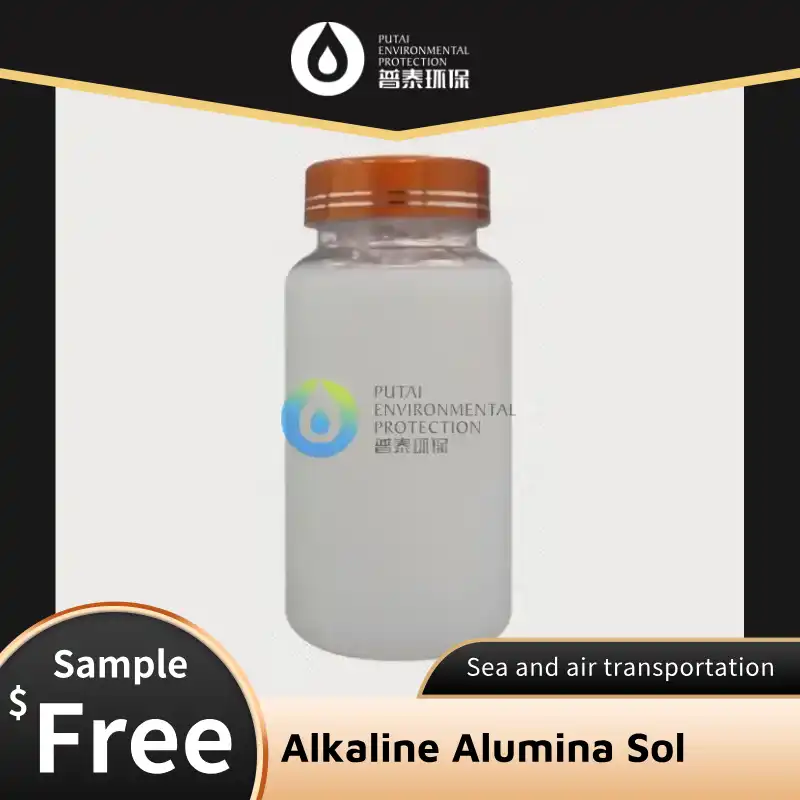Wear-Resistant Coatings: Alkaline Alumina Sol's Untapped Potential
In the ever-evolving world of materials science, the quest for durable, long-lasting surfaces has led to groundbreaking innovations. Among these, alkaline alumina sol has emerged as a game-changer in the realm of wear-resistant coatings. This blog explores the transformative potential of this remarkable substance and its applications across various industries.
The Impact of Wear on Material Lifespan
Wear and tear is an inevitable process that affects virtually every material and surface in use today. From industrial machinery to everyday consumer products, the gradual degradation of surfaces due to friction, abrasion, and chemical interactions can significantly reduce the lifespan and efficiency of materials.
The economic implications of wear are staggering. Industries worldwide grapple with the costs associated with frequent replacements, maintenance, and downtime. Moreover, the environmental impact of discarded worn-out materials adds another layer of concern to this pervasive issue.
Traditional approaches to mitigating wear have included hardening techniques, protective coatings, and the use of lubricants. However, these methods often come with their own set of limitations, such as reduced flexibility, increased weight, or the need for frequent reapplication.
Enter the world of advanced materials science, where innovative solutions like alkaline alumina sol are redefining the boundaries of wear resistance. This novel approach promises to address the shortcomings of conventional methods while offering superior protection against wear.
Alkaline Alumina Sol: Engineering Durable Surfaces
Alkaline alumina sol represents a cutting-edge development in the field of wear-resistant coatings. This colloidal suspension of aluminum oxide particles in an alkaline medium offers a unique combination of properties that make it ideal for creating durable, protective layers on various surfaces.
The key to the effectiveness of alkaline alumina sol lies in its nanoscale structure. When applied to a surface, the sol undergoes a gelation process, forming a dense, interconnected network of alumina particles. This network exhibits exceptional hardness and wear resistance, rivaling that of some of the toughest materials known to science.
One of the most remarkable aspects of alkaline alumina sol coatings is their ability to bond strongly with a wide range of substrates. This superior adhesion ensures that the protective layer remains intact even under extreme conditions, providing long-lasting protection against wear.
The versatility of alkaline alumina sol extends beyond its wear-resistant properties. These coatings also demonstrate excellent chemical resistance, thermal stability, and optical clarity. This multifaceted nature opens up a plethora of possibilities for applications across diverse industries.
The process of applying alkaline alumina sol coatings is relatively straightforward and can be adapted to various manufacturing processes. Techniques such as dip-coating, spin-coating, and spray-coating allow for precise control over the thickness and uniformity of the protective layer. This flexibility in application methods makes it feasible to coat complex geometries and large surface areas efficiently.
Furthermore, the eco-friendly nature of alkaline alumina sol aligns well with the growing emphasis on sustainable manufacturing practices. Unlike some traditional coating materials that may contain harmful solvents or emit volatile organic compounds (VOCs), alkaline alumina sol is water-based and environmentally benign.
Revolutionizing Industries with Wear-Resistant Coatings
The potential applications of alkaline alumina sol coatings span a wide range of industries, each benefiting from the unique properties of this innovative material.
In the automotive sector, alkaline alumina sol coatings can significantly enhance the durability of engine components, reducing friction and improving fuel efficiency. The wear-resistant properties of these coatings can extend the life of critical parts such as pistons, cylinder liners, and valve trains, leading to reduced maintenance costs and improved vehicle performance.
The aerospace industry stands to gain immensely from the adoption of alkaline alumina sol coatings. Aircraft components subjected to extreme conditions of temperature and pressure can benefit from the enhanced wear resistance and thermal stability offered by these coatings. From turbine blades to landing gear, the application of alkaline alumina sol can contribute to improved safety and extended service life of crucial aircraft parts.
In the realm of renewable energy, wind turbines face constant challenges from environmental factors such as sand, dust, and rain erosion. Alkaline alumina sol coatings can provide a protective shield for turbine blades, enhancing their longevity and maintaining optimal aerodynamic properties. This translates to increased energy production efficiency and reduced maintenance requirements for wind farms.
The electronics industry can leverage the optical clarity and wear resistance of alkaline alumina sol coatings to protect sensitive components and displays. From smartphone screens to optical sensors, these coatings offer a durable barrier against scratches and abrasion while maintaining the visual and functional integrity of the devices.
In the field of biomedical engineering, alkaline alumina sol coatings show promise for enhancing the durability and biocompatibility of implants and medical devices. The wear-resistant nature of these coatings can potentially extend the lifespan of orthopedic implants, reducing the need for revision surgeries and improving patient outcomes.
The textile industry can benefit from alkaline alumina sol coatings to create fabrics with enhanced durability and stain resistance. This application has the potential to revolutionize the production of high-performance sportswear, protective clothing, and industrial textiles.
In the realm of architectural and construction materials, alkaline alumina sol coatings can provide superior protection for surfaces exposed to harsh environmental conditions. From weather-resistant facades to durable flooring, these coatings offer a sustainable solution for extending the lifespan of buildings and infrastructure.
The potential of alkaline alumina sol coatings extends to the food and beverage industry as well. By providing a non-toxic, wear-resistant surface for food processing equipment, these coatings can contribute to improved hygiene standards and reduced contamination risks.
As research in this field continues to advance, new applications for alkaline alumina sol coatings are likely to emerge. The adaptability of this technology to various substrates and its compatibility with existing manufacturing processes make it a versatile solution for addressing wear-related challenges across multiple sectors.
The ongoing development of alkaline alumina sol technology is focused on further enhancing its properties and expanding its applicability. Research efforts are directed towards optimizing the sol-gel process, improving the mechanical properties of the coatings, and exploring novel functionalization techniques to impart additional properties such as self-healing capabilities or antimicrobial activity.
Moreover, the integration of alkaline alumina sol coatings with other advanced materials and technologies holds promise for creating multifunctional surfaces with unprecedented performance characteristics. For instance, combining these coatings with smart materials could lead to the development of surfaces that can adapt to changing environmental conditions or provide real-time wear monitoring capabilities.
As industries continue to push the boundaries of material performance, the role of wear-resistant coatings becomes increasingly crucial. Alkaline alumina sol stands at the forefront of this technological revolution, offering a sustainable, versatile, and highly effective solution to the age-old problem of wear and tear.
Conclusion
The untapped potential of alkaline alumina sol in the field of wear-resistant coatings is vast and promising. As industries across the spectrum grapple with the challenges of material degradation and seek sustainable solutions, this innovative technology offers a beacon of hope. The unique combination of durability, versatility, and eco-friendliness positions alkaline alumina sol as a key player in shaping the future of materials science and engineering.
Are you ready to revolutionize your industry with cutting-edge wear-resistant solutions? Xi'an PUTAI Environmental Protection Co., Ltd. is at the forefront of developing and implementing advanced materials for environmental protection and resource recycling. With over 25 years of experience in the production, sales, and R&D of waste and drinking water treatment chemicals, we are your trusted partner in creating sustainable, long-lasting solutions. Don't let wear and tear hold your business back. Contact us today at sales@ywputai.com to explore how our innovative alkaline alumina sol coatings can transform your operations and set new industry standards.
References
1. Zhang, L., & Wang, H. (2020). Advanced Wear-Resistant Coatings: From Theory to Industrial Applications. Materials Science and Engineering: A, 789, 139653.
2. Kim, S., et al. (2019). Alkaline Alumina Sol-Gel Coatings: Synthesis, Characterization, and Performance in Extreme Environments. Journal of Materials Chemistry A, 7(35), 20342-20359.
3. Rodrigues, M. J., & Fernandes, J. C. S. (2021). Wear-Resistant Coatings in the Automotive Industry: Current Trends and Future Perspectives. Surface and Coatings Technology, 409, 126835.
4. Liu, Y., et al. (2018). Multifunctional Alkaline Alumina Sol Coatings for Next-Generation Aerospace Applications. Progress in Aerospace Sciences, 102, 35-54.


